ORGANIC FOODS FOR YOUR PLANTS
Where to Feed, With an Exception
To get the most out of any organic fertilizer, keep in mind how plants feed and how these fertilizers act in the soil. The bulk of plants’ feeder roots — whether the plants are midget marigolds or mighty oaks — lie just beneath the surface, so generally there is no need to dig fertilizer deep into the soil. And anyway, low oxygen levels there would retard the microbial growth necessary to unlock nutrients from most organic fertilizers.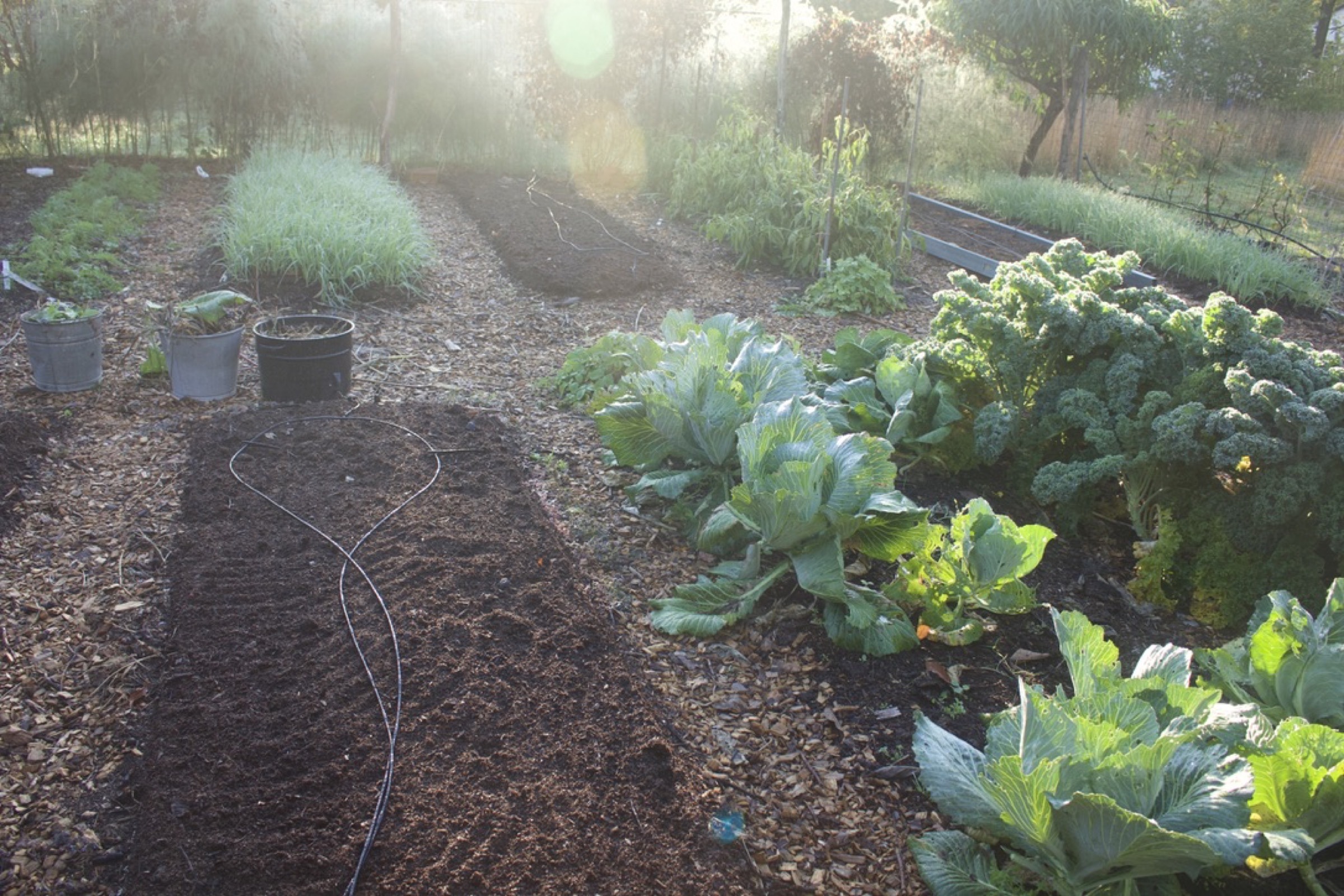
Make exception to that “no dig” rule if phosphorus levels are low, as indicated by a soil test or stunted plants that are purplish when young or late to ripen. Phosphorus moves very slowly in the soil, so the only way to get it quickly into the root zone is to mix it into the top six inches of soil. Once a soil is up to snuff with phosphorus, periodic surface applications can trickle down through the soil profile fast enough to maintain adequate levels throughout the root zone.
Because phosphorus is only slightly soluble in water, plants take it up by root intercept, that is, by growing to the phosphorus. (Most other nutrients are soluble and moved about within the soil by water.) In spring, cool soil temperatures might slow root growth enough for a plant to show that it’s hungry for phosphorus, even though enough phosphorus is present in the soil. Usually, you and your plants can just wait things out until the soil warms and the temporary symptoms subside.
Meal Times
As far as when to apply organic fertilizers, keep in mind that the nutrients in most of them are initially insoluble and in forms that plants cannot use immediately. Account for the time lag between application and nutrient release by spreading organic fertilizers a few weeks before planting. Or a few months before planting! You could even have applied organic fertilizer way back in late autumn.
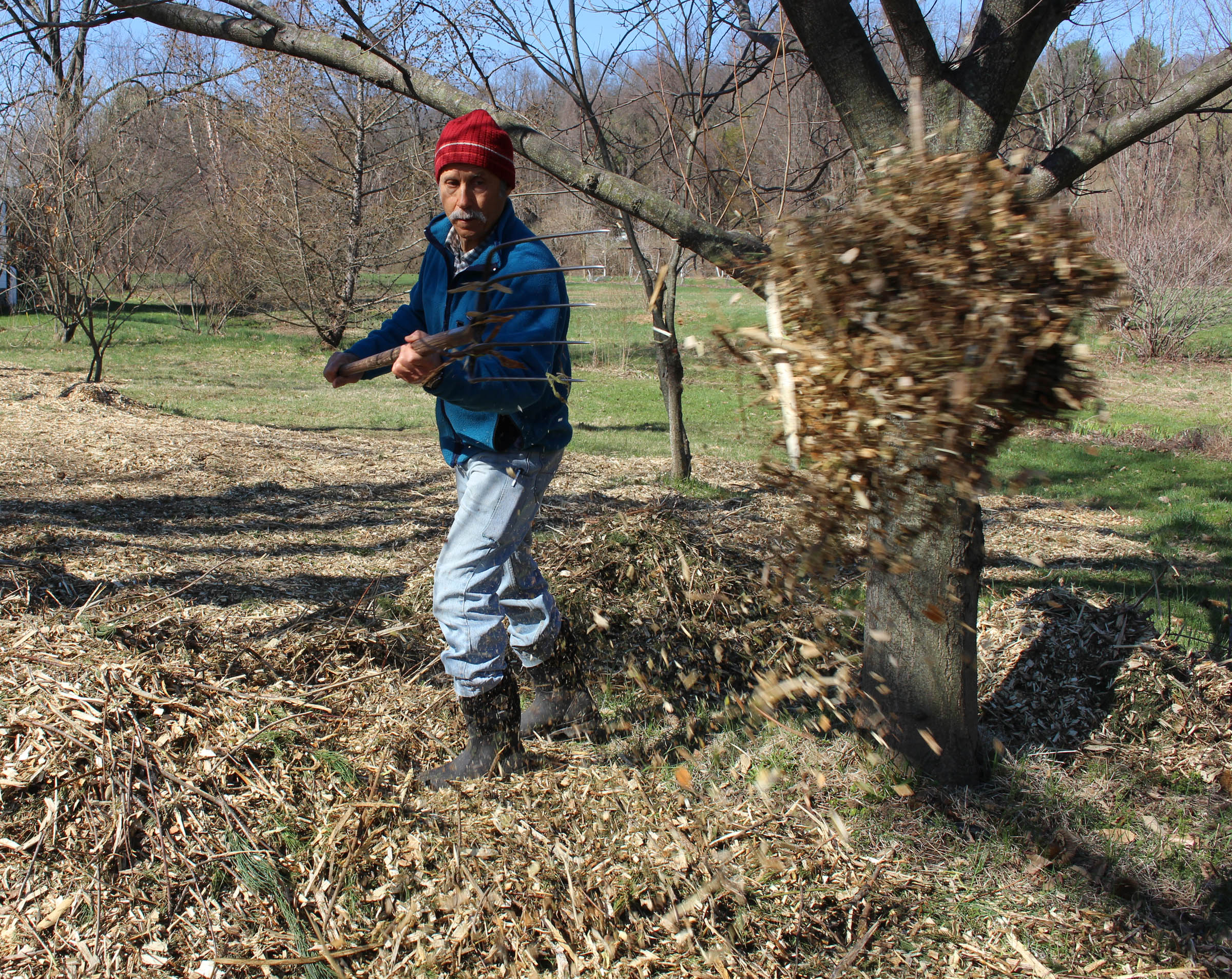
Over time, even wood chips nourish the soil and plants, here applied in fall
Because soil microorganisms need time, warmth, and moisture to release nutrients from organic fertilizers, plants may have to wait to “eat” if the ground is dry. In this case, watering not only quenches a plant’s thirst, but also makes food available.
Occasionally, you may have to tailor your fertilizer to special conditions. For instance, a spell of unseasonably cool weather in spring slows microbial activity. If you must spur plant growth at that time, apply a light application of some soluble organic fertilizer whose nutrients are quickly available — blood meal or fish emulsion, for example.
A quick-acting fertilizer might also be needed when a plant is so hungry that it actually shows symptoms of starvation, such as yellowing, older leaves, and needs some fast food. Leaves can absorb nutrients directly, and for a really quick effect, spray seaweed extract or fish emulsion right on leaves. Avoid plant injury by reading label directions and following specified rates for leaf sprays carefully.
Compost tea is a tea for plants made just the way it sounds, by steeping a porous bag of compost (in burlap, for example) in water until the water turns dark brown. Like seaweed extract, compost tea is a relatively weak fertilizer. Some gardeners value microbes in the tea and spray it on leaves mostly for pest control. The jury is out on this use of compost tea.
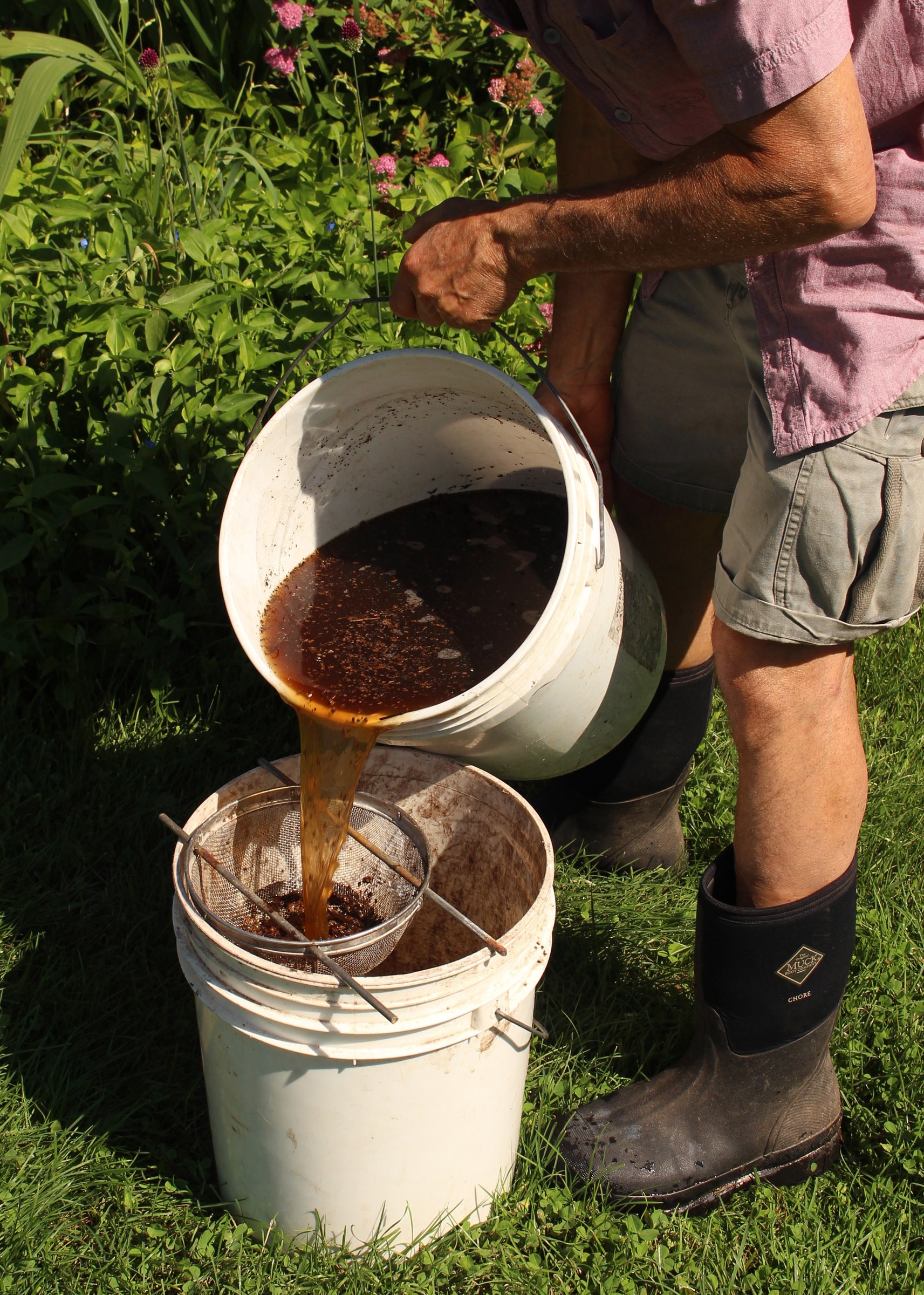
Straining compost-water mix for making compost tea
Consider use of quick-acting or foliar fertilizers as quick-fixes only. Build up good reserves of nutrients in your soil and such applications will be unnecessary.
Looking Long Term, With a Couple More Exceptions
Spreading an inch of compost, or a few inches of leaves, wood chips, or some other organic mulch over the ground each year is a great way to build up that nutrient reserve and might provide all the nourishment your plants need, depending on what you grow. The hungriest parts of the garden are vegetable and formal flower beds; give them compost. Less needy are woody plants, mixed flower borders, and wildflowers; give them any organic mulch.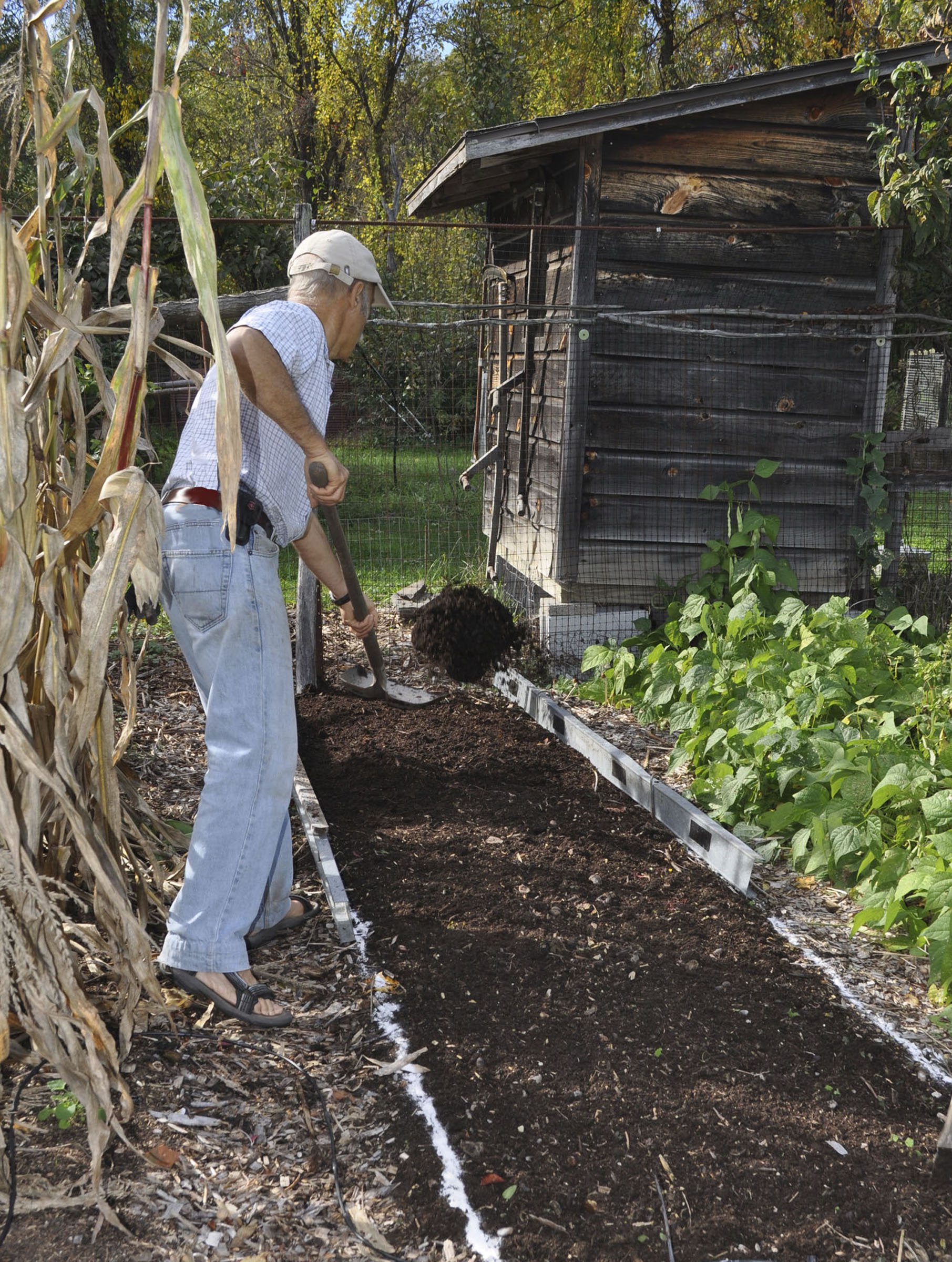
Over the years, the compost or other organic mulches will enrich the soil to offer a spectrum of nutrients available to plants. That’s in addition to providing other benefits, such as improving water flow through and air flow into the ground, and nurturing beneficial microorganisms for pest resistance.
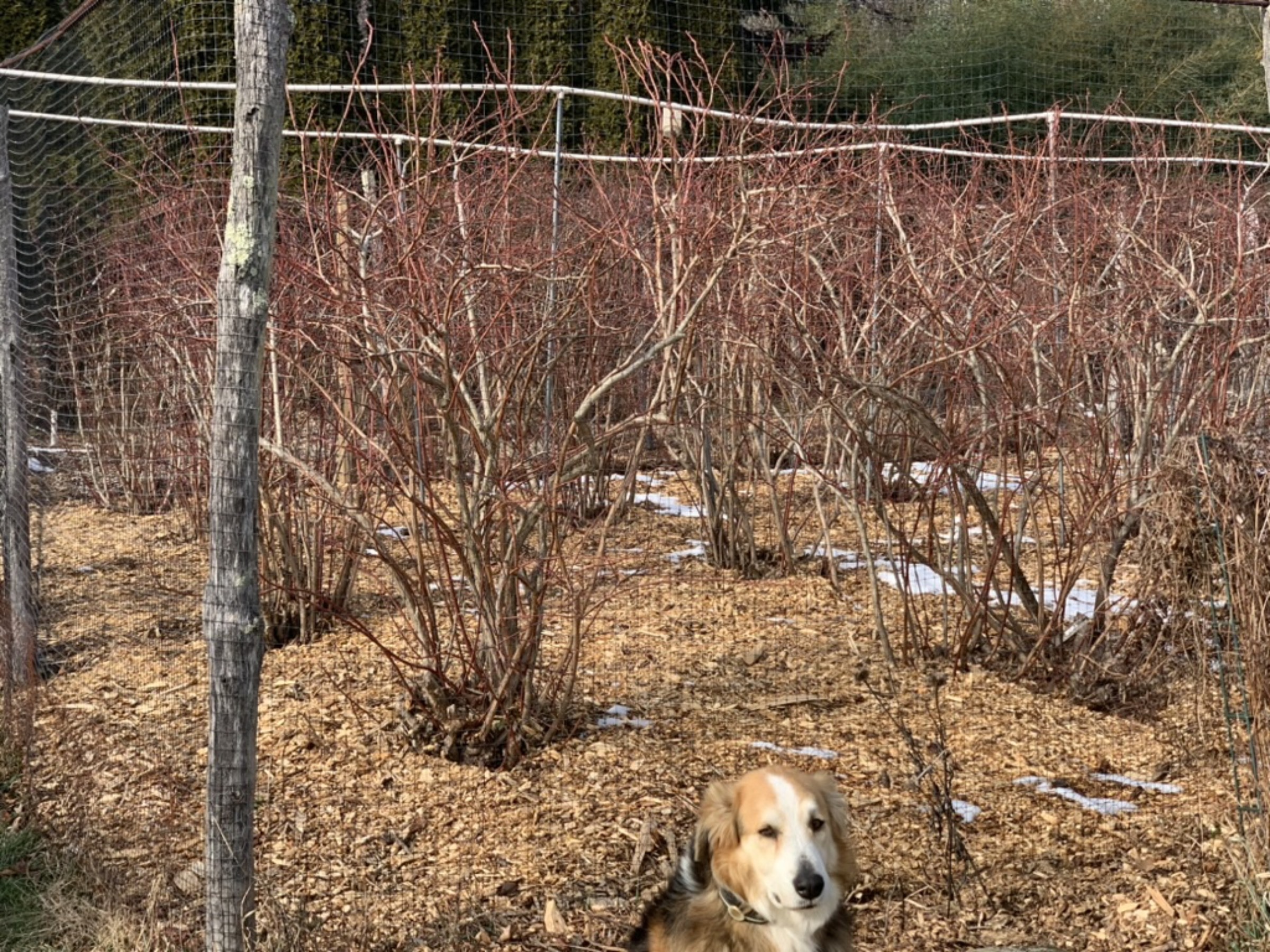
After decades of applications, mulch provides all the fertility my blueberries need
In naturally poor soils, some additional, more concentrated, nitrogen fertilizer might — just might — also be needed. If that’s the case, my go-to fertilizer is soybean meal. Small bags are available at garden centers; larger ones at feed stores. (It’s mostly used as an animal feed.) Sprinkled over the ground once a year just before mulching, is convenient, nourishing, and organic. Apply a couple of pounds per hundred square feet.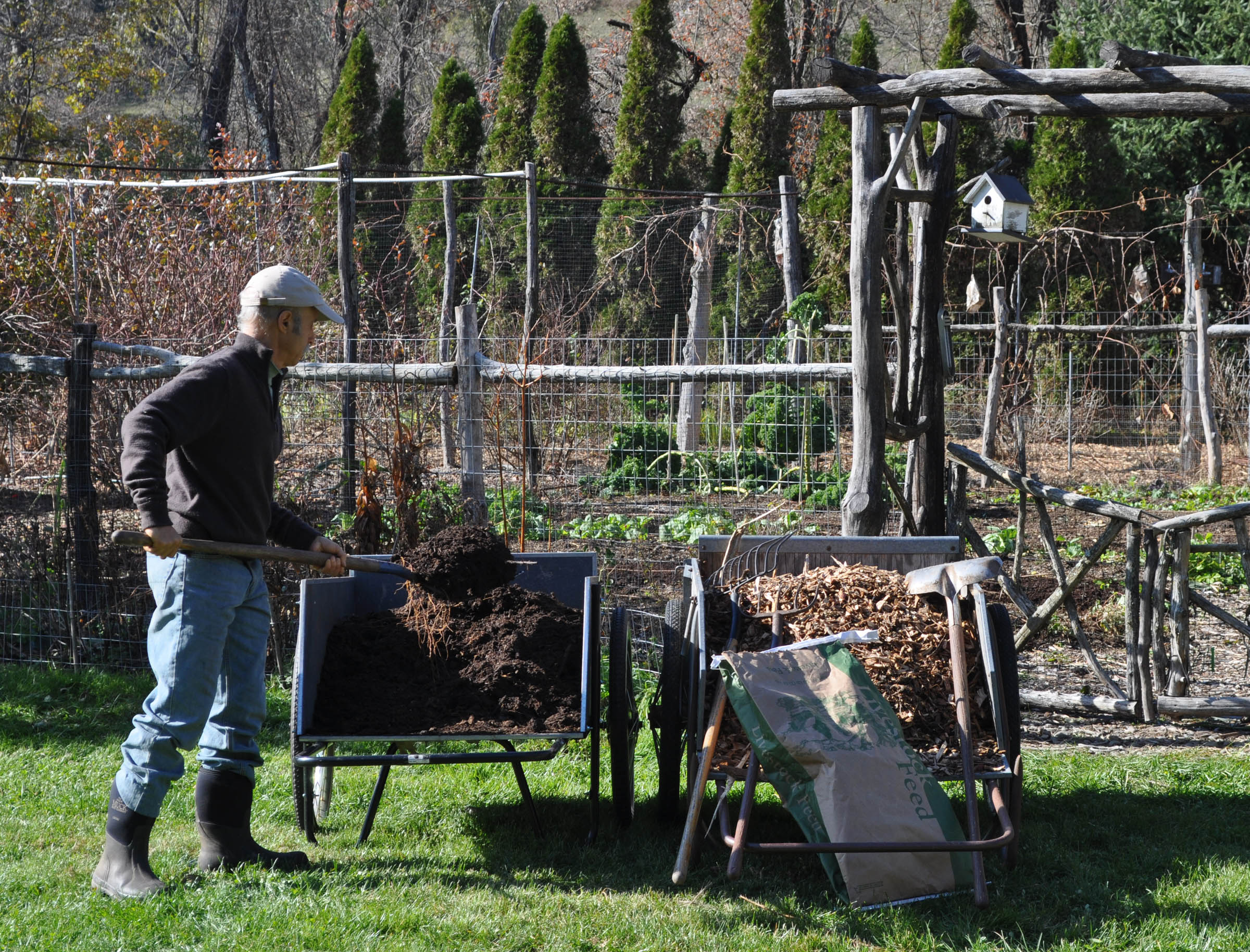
After a few years of building up levels of organic matter in your soil, continued additions of organic matter should provide all your plant’s needs. Of course, I’ve got to mention a couple of exceptions here also: One especially rainy season where rainfall was 8 inches (16 percent!) more than usual, many garden plants looked hungry for nitrogen, possibly because much of the soluble nitrogen had washed out of the ground; so I sprinkled some nitrogen-rich, organic fertilizer over the beds. And I always add soybean meal to my home made potting mixes, which have to provide nourishment and other benefits to root growth limited by the size of the pot. 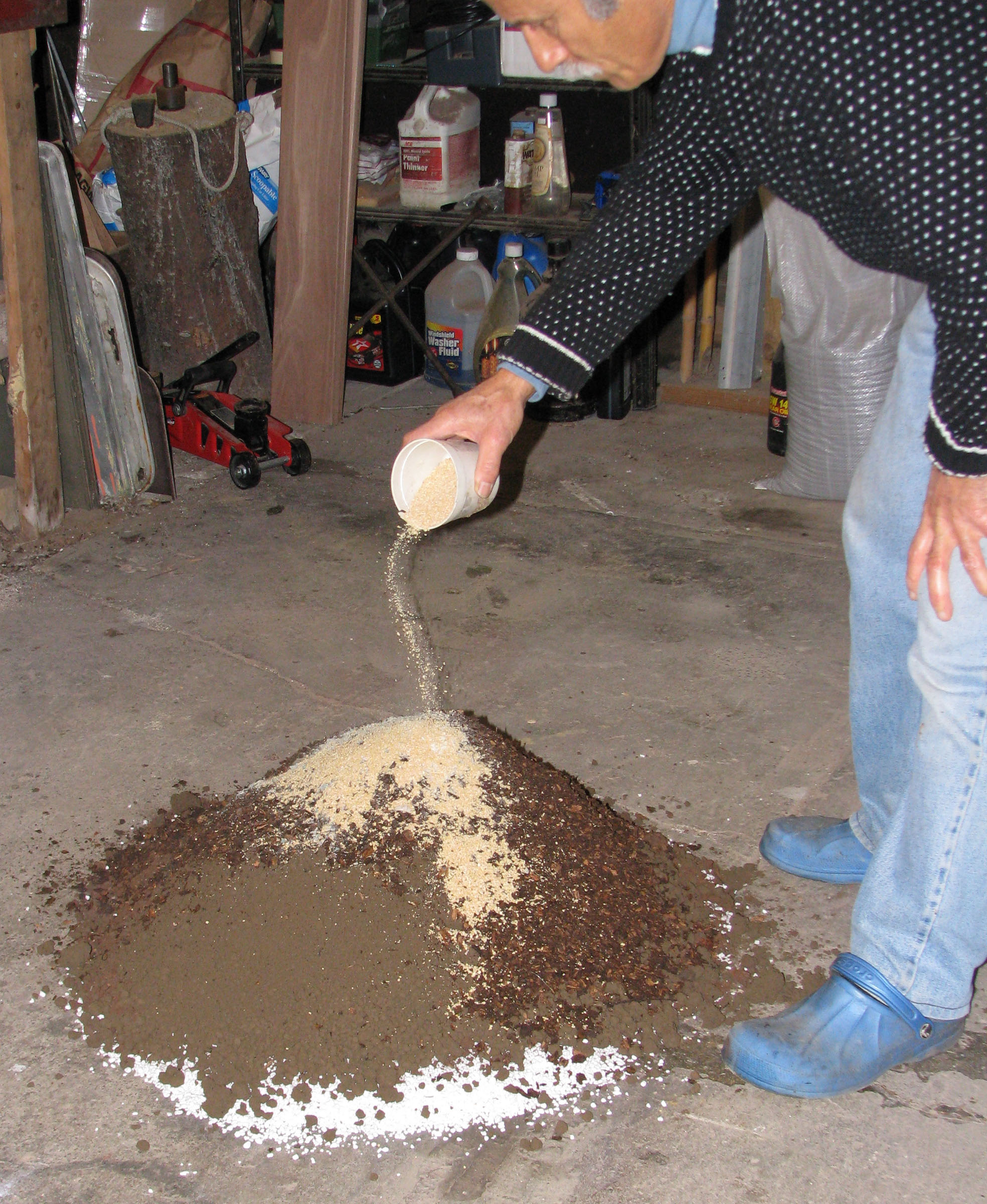
(More details on using fertilizers can be found in my book WEEDLESS GARDENING.)


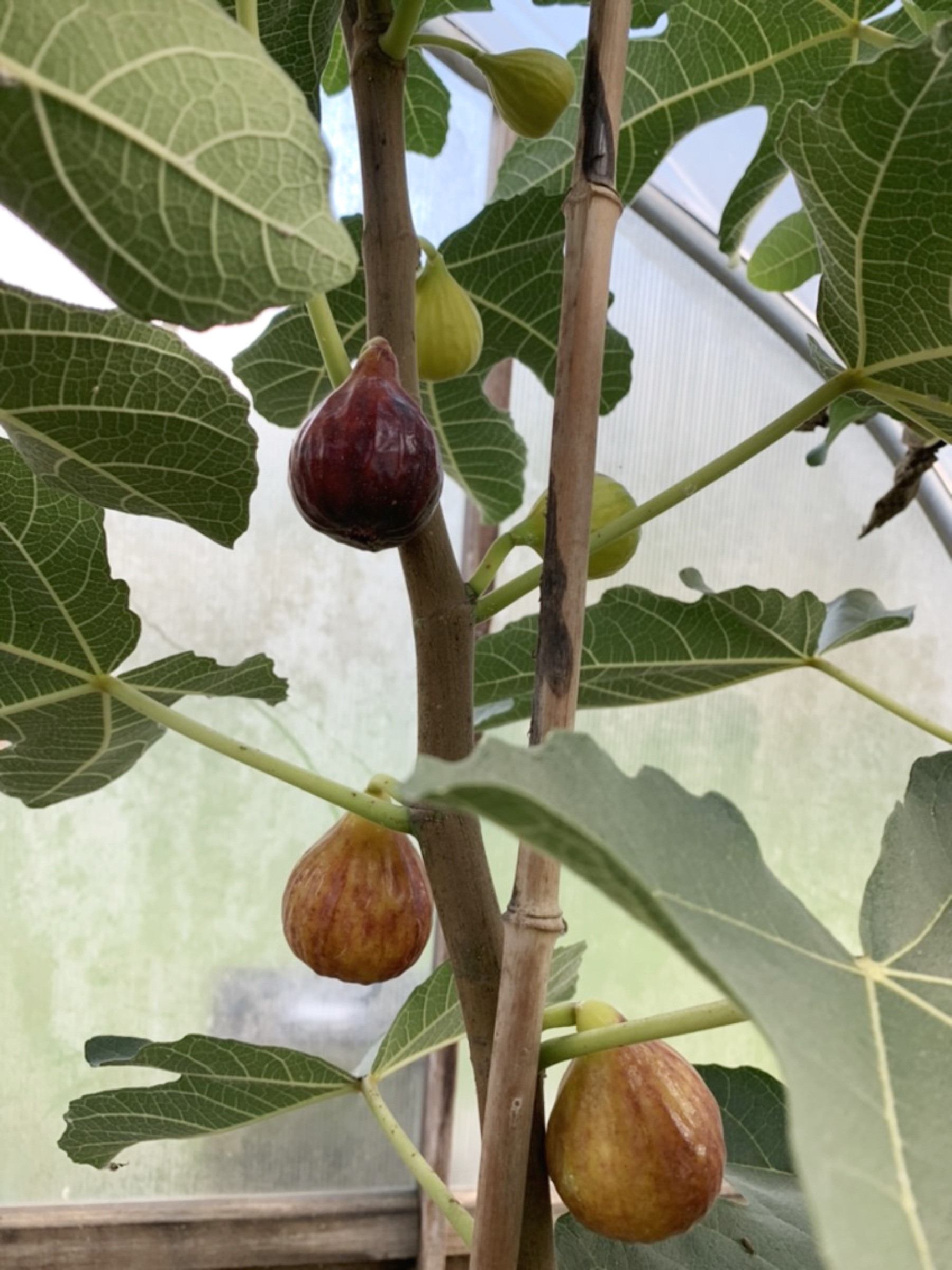
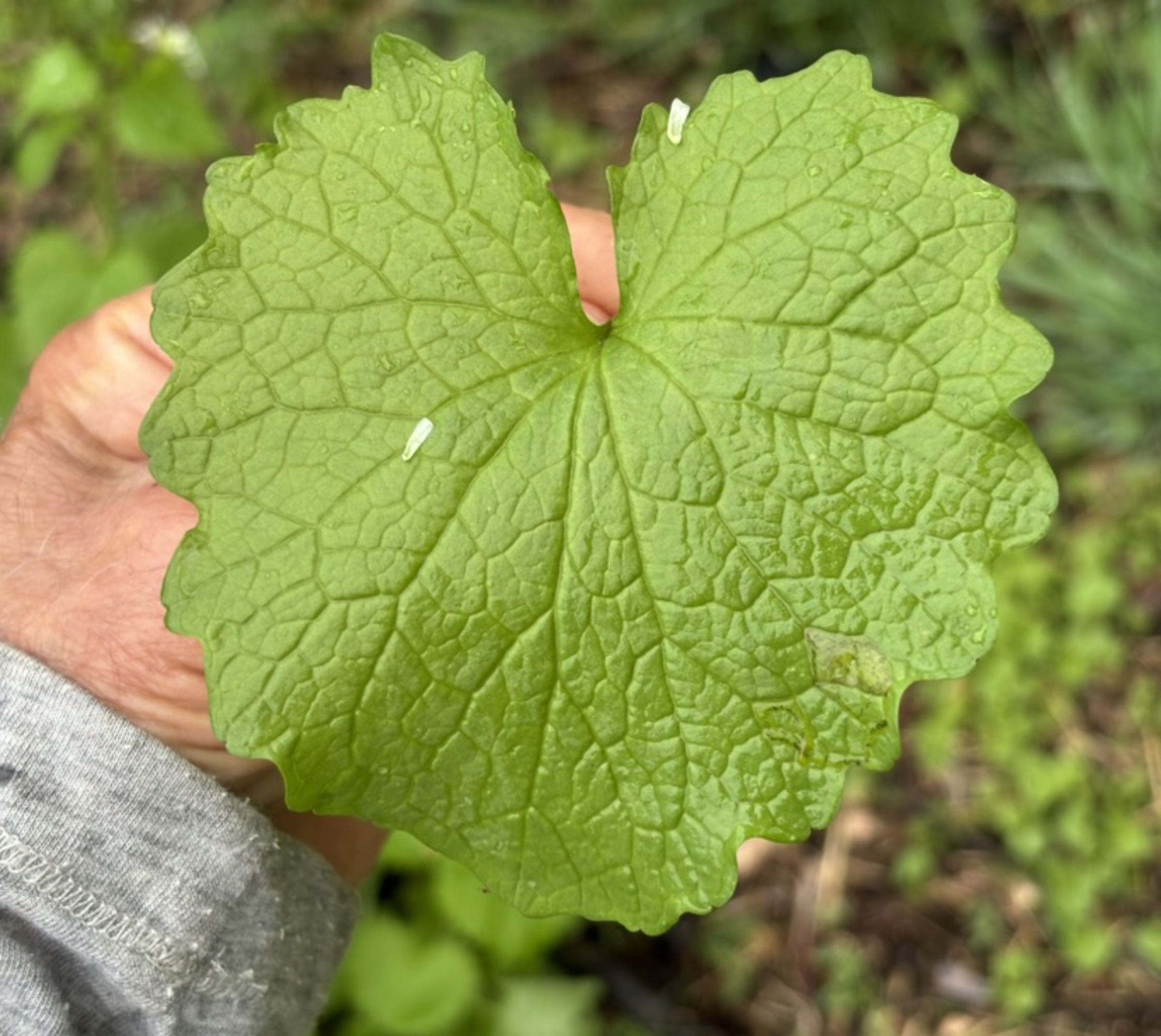
This is great into!
Do you have any suggestions on timing and type of fertilizer to help asparagus that needs a boost?
Feed them just once a year, anytime if you use organics. Compost, in inch deep, is best. Soybean meal, 2# per hundred square feet works. Permanent mulch of weed-free organic material such as wood chips, wood shavings, straw, eventually might supply enough nutrition and keep down weeds.
Hi Lee,
I see some gardeners recommending using a broadfork in the spring for no till gardens to loosen and aerate the soil. I have never used one in my no till garden. What are your thoughts on using a broadfork?
I never used one in my garden either. But my soil is well drained and is a clay loam with good structure. Also, I don’t walk on it at all so it never gets compacted.
Would you recommend to add 1″ of compost every year if I have Midwest prairie clay soil ? I have be using wood mulch on top of all my beds for weed suppression and growing Clover for nitrogen fixation. Last year, I had to apply some organic nitrogen fertilizer on my Broccoli bed as it was producing from late spring to November and toward the end, I also had add some compost in mid summer on that bed as the Broccoli was not looking happy !
I think 1″ of compost per year is a good idea; I’ve done it for decades. But if you put is on top of wood mulch, the wood starts to decompose fast enough so that it robs the soil of nitrogen, temporarily. You could either remove the wood mulch before putting down the compost, or sprinkle some high nitrogen fertilizer, such as soybean meal, on top of the wood mulch before putting down the compost.
Thanks Lee. I am going to pull the mulch away before I add the compost and then cover them with the mulch. I found compost if uncovered will catch a lot of weed growth. Wood mulch on top of compost will minimize weed grow.
Sounds good.